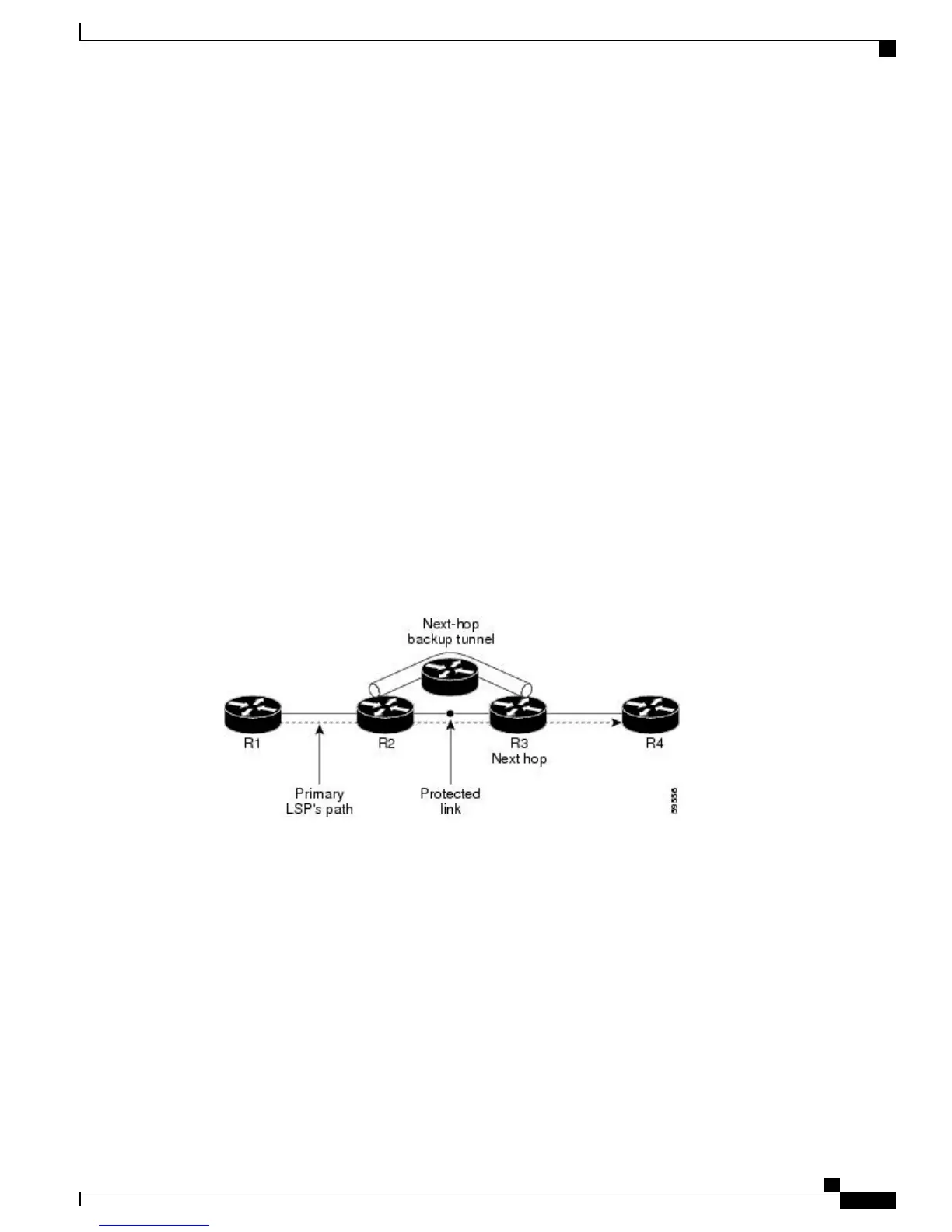backup tunnels. The attribute-set consists of a set of tunnel attributes such as priority, affinity, signaled
bandwidth, logging, policy-class, record-route and so on.
The following rules (consistent across all auto-tunnels) apply while configuring the attribute-set:
•
If no attribute-set template is defined, the auto-tunnels is created using default attribute values.
•
If an attribute-set is defined and the attribute-set template is already configured, the auto-tunnel is created
using the attributes specified in the associated attribute-set.
•
If an attribute-set is assigned, but it is not defined or configured, auto-tunnel is not created.
•
Any number of attribute-sets can be configured with same attribute settings.
•
Empty tunnel attribute implies all parameters have default values.
•
When specific attribute is not specified in the attribute-set, a default value for that attribute is used.
Link Protection
The backup tunnels that bypass only a single link of the LSP path provide link protection. They protect LSPs,
if a link along their path fails, by rerouting the LSP traffic to the next hop, thereby bypassing the failed link.
These are referred to as NHOP backup tunnels because they terminate at the LSP's next hop beyond the point
of failure.
This figure illustrates link protection.
Figure 11: Link Protection
Node Protection
The backup tunnels that bypass next-hop nodes along LSP paths are called NNHOP backup tunnels because
they terminate at the node following the next-hop node of the LSPs, thereby bypassing the next-hop node.
They protect LSPs by enabling the node upstream of a link or node failure to reroute the LSPs and their traffic
around a node failure to the next-hop node. NNHOP backup tunnels also provide protection from link failures
because they bypass the failed link and the node.
Cisco IOS XR MPLS Configuration Guide for the Cisco CRS Router, Release 5.1.x
169
Implementing MPLS Traffic Engineering
MPLS Traffic Engineering

